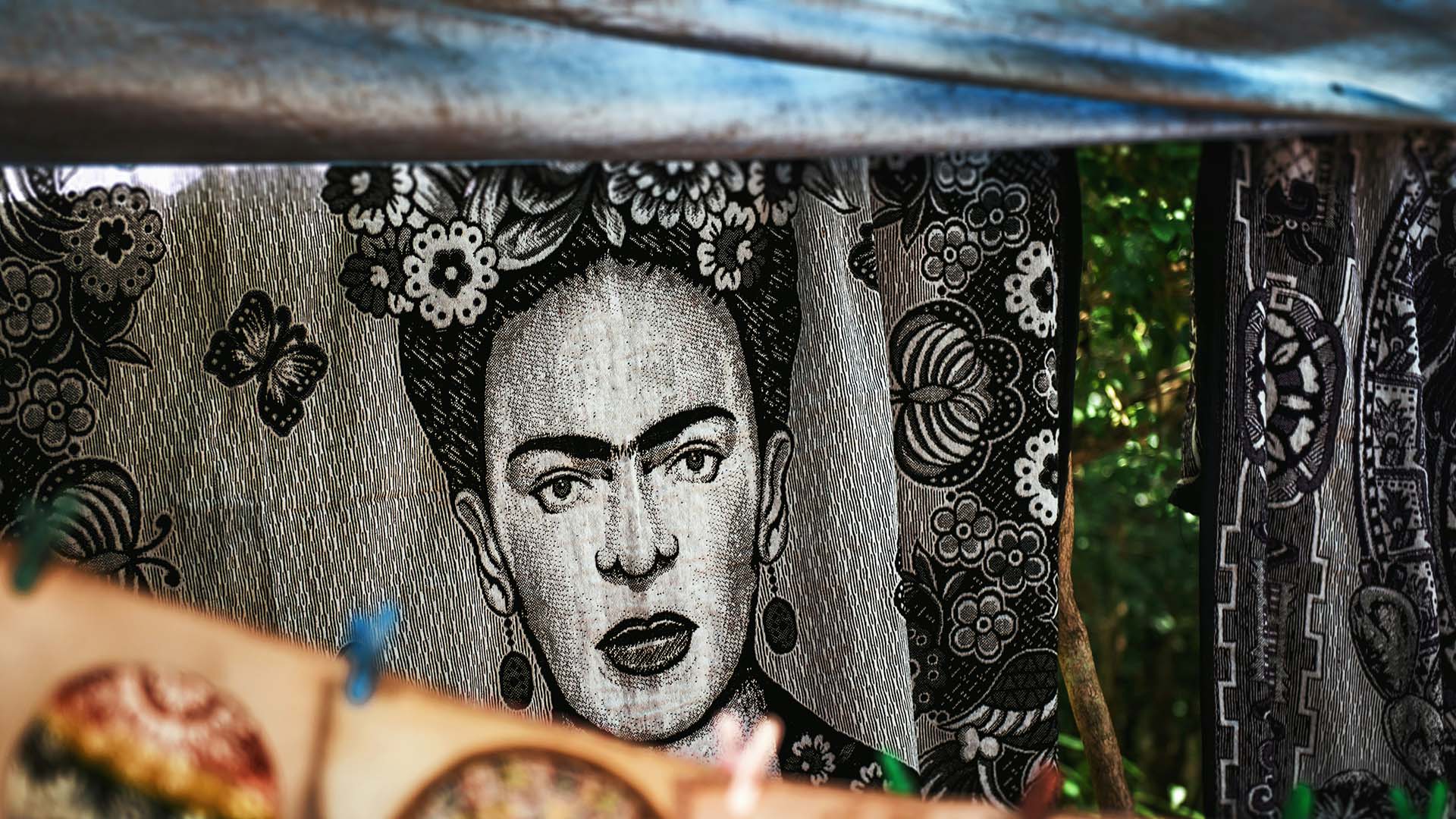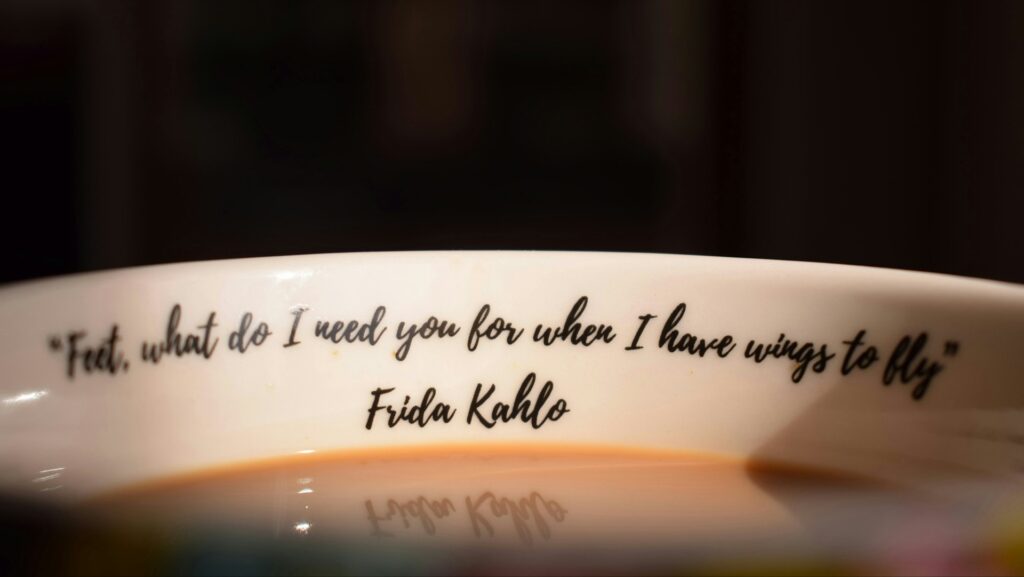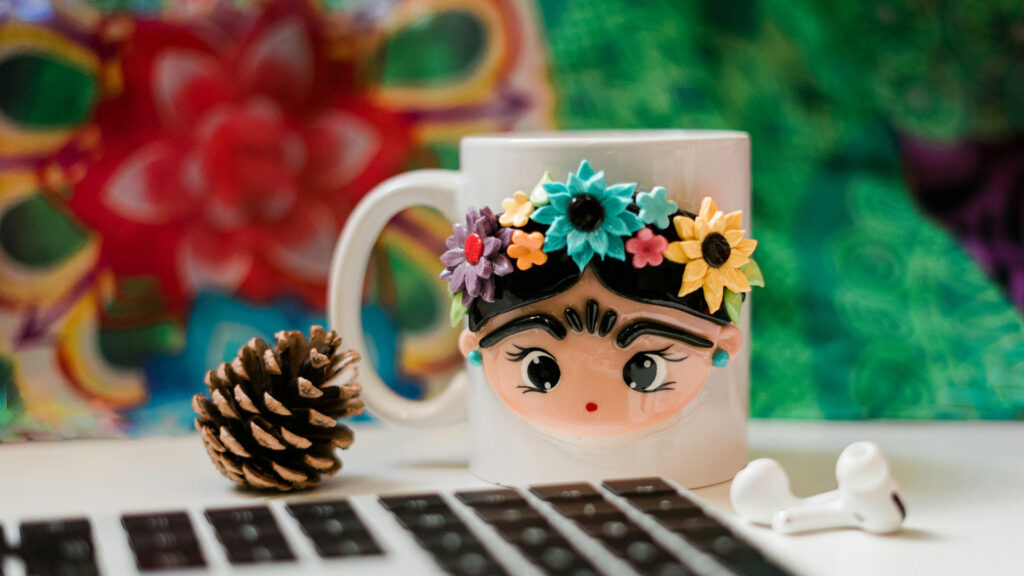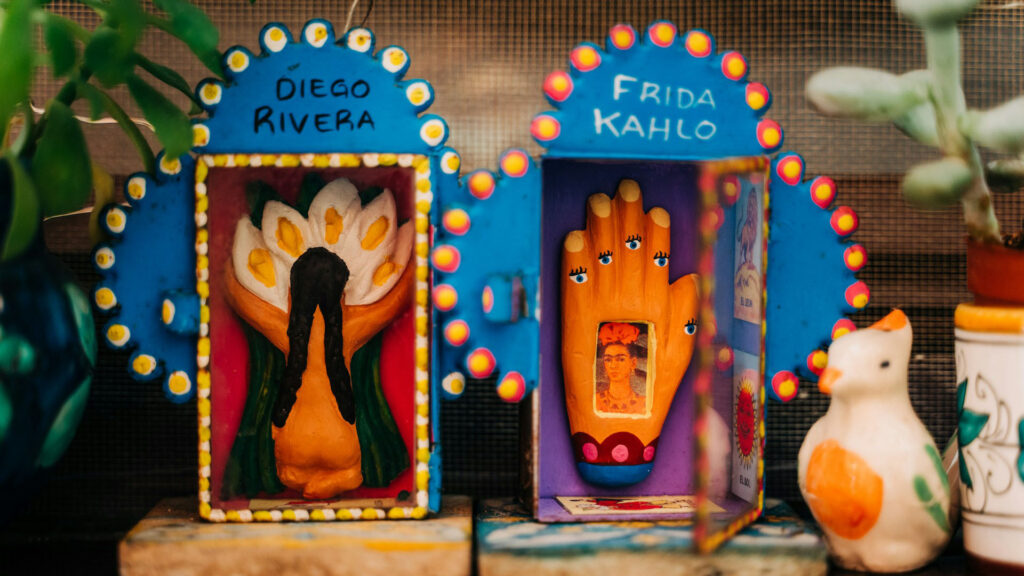
Frida Kahlo–inspired tapestry woven into a portrait celebrating resilience, identity, and Mexican folk art / Credit: Tim Mossholder
For decades, people have come to Mexico City to walk through the blue walls of Casa Azul. They want to connect with the brilliant and troubled soul of Frida Kahlo, the Mexican painter. But what if the story we know is only the second chapter? A new, deeply personal space has opened its doors, promising to reveal the world that shaped the artist before she became an icon. The Kahlo family created the Museo Casa Kahlo. It gives a unique look into Frida’s early life, family relationships, and home. These helped shape one of history’s most famous creative minds.
Mexico City’s Latest Cultural Gem
In the centre of the historic Coyoacán neighborhood, a bright red house welcomes visitors. It is a short walk from the famous blue house. This house shows a different time in Frida’s life. This new museum comes at an important time for Mexico City. The city is having a big cultural and tourism comeback. More than four million international hotel guests visited in 2023. The Museo Casa Kahlo will be an important place for new and returning visitors. They can learn more about Mexico’s artistic heritage there.
Why This New Museum Matters: A Fresh Perspective on Frida Kahlo
Casa Azul tells the story of Frida as an established artist. It shows her passionate and difficult relationship with Diego Rivera. It also shows her political activism and her fight with physical pain. The Museo Casa Kahlo tells the story before that. It removes myths and celebrity stories. It shows Frida as a daughter, a sister, and a young woman shaped by her family home. This museum changes the focus from her famous partnership with Rivera. It highlights her important relationships with her parents and siblings. This gives a more detailed and human view of her life.
Unveiling Museo Casa Kahlo: What Makes This Opening Unique
The excitement around Museo Casa Kahlo lies in its promise of a new narrative. It’s not a reimagining of Frida’s story but a missing, essential chapter that contextualizes the artist we thought we knew.
The “Other House”: Distinguishing from Casa Azul (Museo Frida Kahlo)
Locals and Kahlo aficionados have long known of the “Casa Roja,” or Red House. Unlike Casa Azul, which Frida transformed into her creative and marital space, this was first and foremost a family residence. It was the home where the Kahlo family lived, celebrated, and weathered life’s storms. Its purpose was domestic and familial, and the museum’s curation honours that distinction. The experience is less about the finished masterpieces and more about the environment that made them possible.
The Significance of Aguayo 54: Frida’s Childhood and Early Life
The address itself—Aguayo 54, in the Del Carmen area of Coyoacán—is a piece of history. This is where Frida spent formative years, where she first learned about photography from her father, and where she developed the fierce independence that would define her. The house is physical proof of her origins. It existed before the bus accident, before Diego, and before she became famous worldwide. It is, in essence, the starting point of her extraordinary journey.
A Deep Dive into the Kahlo Family Legacy
The museum’s core mission is to illuminate the profound influence of the Kahlo family. Visitors will meet Frida’s father, Guillermo Kahlo. He was a German immigrant and a famous photographer. His careful eye for composition influenced his daughter. You will also learn about her mother, Matilde Calderón y González. She was a woman of indigenous and Spanish descent who kept the family connected to Mexican traditions. The focus is on the Kahlo family’s life. The household was full of creativity, curiosity, and strength.
The Visionaries Behind the Project: Mara Romeo Kahlo and Cristina Kahlo
This project is a labour of love, spearheaded by Frida’s own descendants. Her great-niece, Mara Romeo Kahlo, has been a passionate guardian of the family’s legacy. Cristina Kahlo, a well-known photographer, works alongside her. She adds a special artistic touch to the project. Their goal is clear. They want to share a fuller history of Frida. This history celebrates her family ties and shows the happiness and normal life of her early years. It balances the well-known stories of her suffering. Fundacion Kahlo, a newly formed nonprofit in New York, was created by the Kahlo family to preserve Frida’s legacy and promote Mexican, Indigenous, and Latin American art globally.

Frida Kahlo bust glowing in a shop window, vibrant and magnetic / Credit: Gabriella Clare Marino
Inside Frida’s World: Exploring Her Home and Studios
Stepping into the Museo Casa Kahlo feels like entering a time capsule. The collection shows personal items instead of famous paintings. It gives a close look at Frida and her family. The museum preserves the character of a lived-in home. You can walk through the rooms where the Kahlo family gathered and imagine conversations around the dinner table. The layout invites you to absorb the house’s atmosphere, from the warm, welcoming kitchen to the quiet corners where Frida may have sketched as a child. It feels less like a gallery and more like being a guest of the Kahlo family.
How the Museo Casa Kahlo Illuminates Her Iconic Works
Seeing the family photos, the religious images in her home, and the rooms where she grew up gives new ways to understand her paintings. The themes of family, heritage, and home, which are central to her work, feel more potent and deeply rooted when you have walked through the residence where those concepts took shape for her.
Unearthing the Family Archive: Letters, Notes, and Childhood Photographs
Perhaps the most compelling part of the museum is its archive of previously unseen documents. A collection of personal letters shows Frida’s inner thoughts. It also shows her close relationships with her family, especially her sister Cristina. These writings offer a candid look into her mind before she cultivated a public persona. The museum has many family photos, including many taken by her father. These photos show her childhood with care and closeness. They change how we see her.
A Glimpse into Her Collections: From Oil Ex-Votos to Asian Dolls
Frida was an avid collector, and the museum showcases items that reveal her eclectic tastes and artistic influences. The museum shows parts of her collection of oil ex-votos. These are small, devotional paintings by amateur artists. They clearly inspired her own folk-art style. You will also see personal treasures like her collection of Asian dolls. These dolls show her global curiosity alongside her strong love for Mexican culture.
Frida’s Legacy in Mexican Art and Indigenous Culture
The museum strongly shows Frida’s deep connection to her Mexican heritage. It shows that her embrace of traditional clothing and folk art was not a performance but an authentic expression of her upbringing. Her mother and the culture at home shaped her identity. This made her a key figure who promoted Mexicanidad worldwide.

“Feet, what do I need you for when I have wings to fly” is a famous quote by Mexican artist Frida Kahlo
Beyond the Canvas: Personal Artifacts Reflecting Her Life and Artistic Expression
The story of Frida Kahlo is told through her belongings. The museum shows some of her clothes, jewelry, books, and her very first oil painting. Each item reveals her personality and how she shaped her identity. These artifacts are not presented as relics but as active elements of her self-expression. They demonstrate how her life and art were inextricably linked, with every choice, from her wardrobe to the books she read, being a form of artistic creation.
The Role of the Photography Studio and Darkroom
A highlight of the museum is the recreation of Guillermo Kahlo’s photography studio and darkroom. This space is central to understanding Frida’s artistic DNA. It was here she learned about light, shadow, and portraiture. Seeing her father’s equipment and process gives a direct link to the strong, direct look in her self-portraits. It’s a powerful reminder that her artistic journey began not with a paintbrush, but through the lens of a camera.
The Power of Self-Portraits and the Stories They Tell
Frida’s self-portraits deeply explore pain, identity, and strength. Works like The Broken Column are often viewed solely through the lens of her physical suffering. After visiting Museo Casa Kahlo, you see her lively youth and strong family support. This shows the strength she had before her accident. It’s a story of a resilient spirit, not just a broken body.

Colourful Frida Kahlo mug / Credit: Gabriella Clare Marino
Planning Your Visit to the Museum
Museo Casa Kahlo is located at Aguayo 54 in Col. Del Carmen, Coyoacán, Mexico City. The neighborhood is historic, walkable, and full of character. Many visitors arrive by taxi or ride-sharing for convenience, but public transit works well too. The closest metro station is Coyoacán on Line 3, and from there it’s a pleasant 15–20 minute walk through leafy streets. If you prefer, take a short taxi ride from the station to save time.
The museum is open from Wednesday (miércoles) to Monday (lunes), 9:00 AM to 7:00 PM and closed on Tuesday (mattes). Hours can vary for guided tours and public holidays (feriados), so it’s wise to confirm details on the official site before you go.
Plan to spend approximately 90 minutes to two hours to fully explore the exhibits without rushing. Wear comfortable shoes, as you will be on your feet for the duration of your visit. If you’d like to add lunch or browse the local markets in Coyoacán, set aside at least half a day. It’s a lovely area to wander, and combining the museum with the neighbourhood makes for a satisfying outing.

Homage to Diego Rivera and Frida Kahlo / Credit: Gabriella Clare Marino
Complementing Your Visit: Nearby Frida and Diego Rivera Sites
To fully understand Frida Kahlo, you should visit several important places related to her. Start your day at the Museo Casa Kahlo to understand her origins. Then, walk the few blocks to the Museo Frida Kahlo (Casa Azul) to see how she built her own world as an artist. To complete the story, visit the Museo Casa Estudio Diego Rivera y Frida Kahlo in the nearby San Ángel neighborhood. You can see the two houses where she and Diego lived and worked. These houses show their “separate together” relationship.
